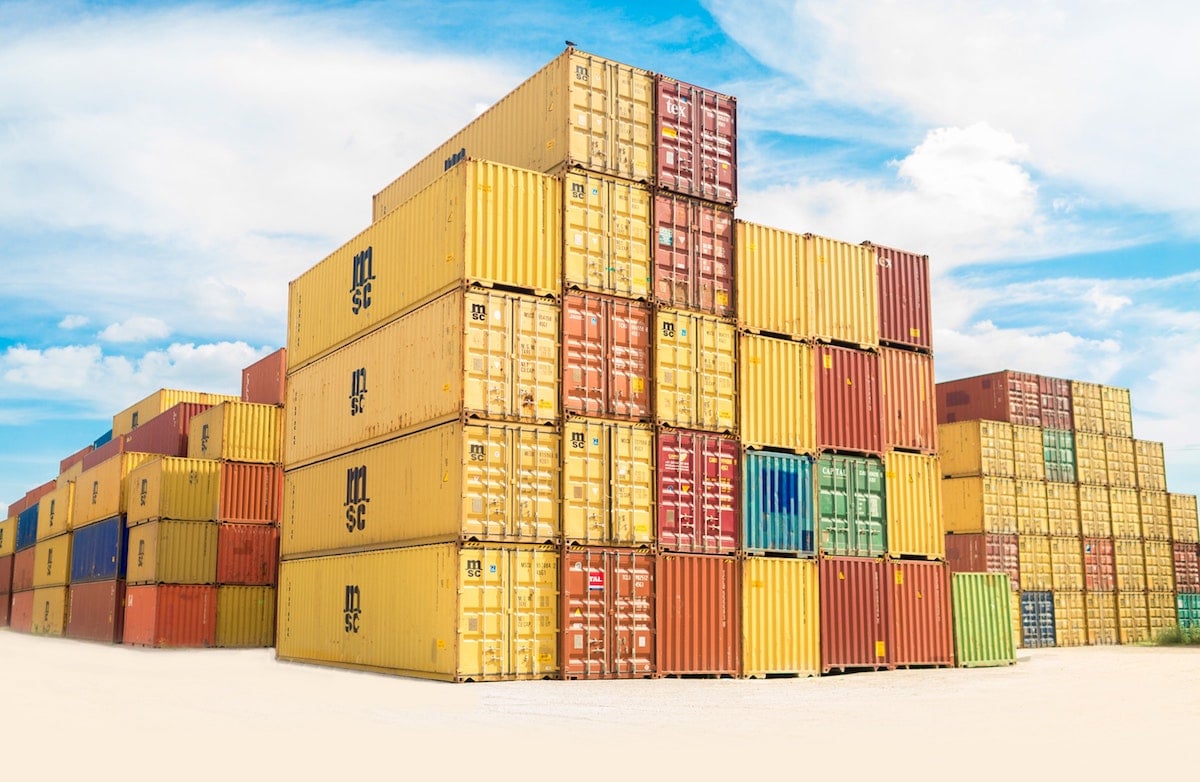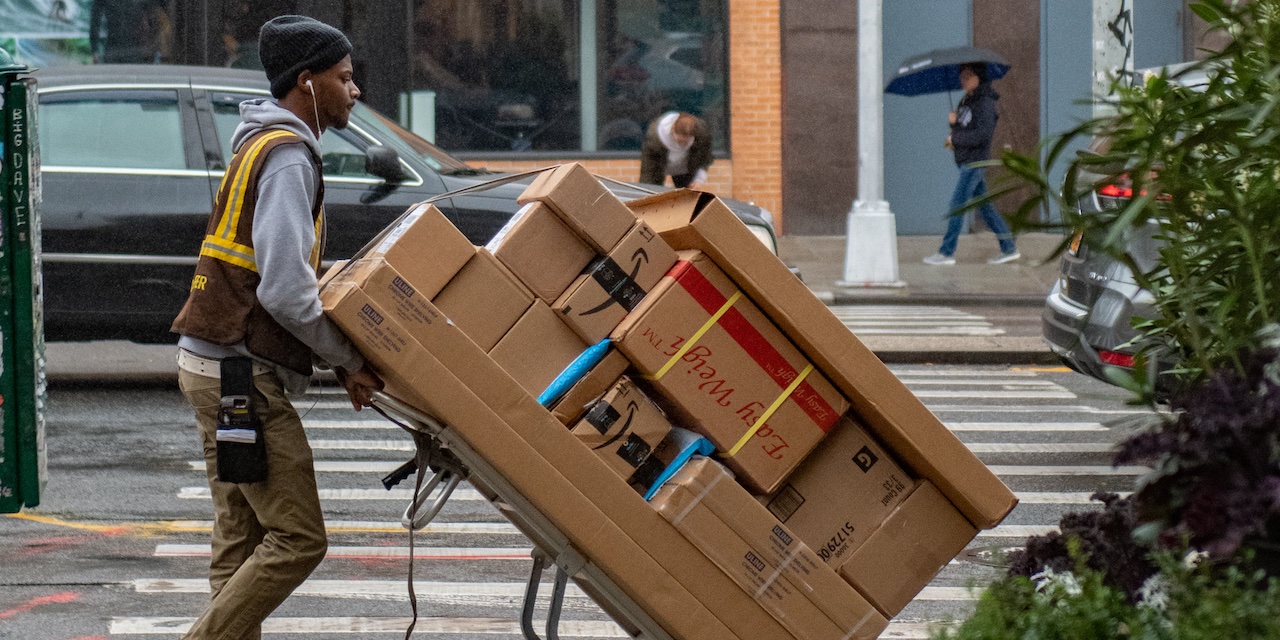In order to answer your request, we are obligated to process the data given above. Sometimes, however, we would like to use them for slightly different purposes, such as statistical data or informing you about our new products and services.We promise that we will use the given information for communication purposes only. We also remind you that you can unsubscribe from our mailing at any time (see Privacy Policy).
The global supply chain is changing rapidly, and a major part of this shift is the focus on sustainable development and a greener future.
What we knew earlier as assumptions are now taking on real shapes as the statistics are quite conclusive: the transportation sector is still growing and according to a report of the World Economic Forum the demand for freight is expected to triple and the demand for aviation to double by 2050.
The conclusions of that study are rather sad, and the next steps taken should be radical. Looking at the accelerating degradation of the global environment, there is no time to wait, there is time to act - and the shipping industry has a lot to do here.
What is the environmental impact of shipping?
In our daily lives, we do not often think about how our actions translate into environmental issues. Why? Because we are not fully aware of many of these activities. Although we are fairly well versed in this matter as a society, we miss out on a lot of things.
Only when the importance of smaller actions in everyday life is understood, the scale of the impact on the environment can be fully realised. There is no denying that the share of freight services will play a significant role in this case. Shipping companies are facing up to the scientific facts and are looking ever more boldly towards a sustainable future.

Global warming
I am convinced that there is not a single person among us who has not learnt about climate change, in the course of education over the last 30 years. We have listened about rising air and ocean temperatures, about melting glaciers, often without reflecting on what is causing these events.
These problems are induced by high greenhouse gas emissions (GHG) trapping far too much solar radiation in the atmosphere, thus raising the temperature of the planet. Unfortunately, logistics plays a large part in their production.
As Oceana - an international organisation focused on saving the oceans - points out, as much as 90% of world trade is carried out by shipping. In addition, another report shows that only marine vessels account for around 3% of global CO2 emissions.
These huge numbers are proving how serious the problem is. As consumers, we undoubtedly contribute to this daily, because the growing consumption of goods and online shopping simply fuels world trade.
Carbon dioxide emissions
The abundant GHG emissions worldwide are not limited to CO2, yet it is the most frequently mentioned. Also, in the case of shipping emissions, its volume has the largest share.
It is worth pointing out, however, that this is not the only case: ships also produce other gases, such as black carbon and nitrogen oxides, which are equally dangerous from an environmental and air pollution point of view.
What has been recorded in recent years is an unprecedented situation - according to NASA, the level of carbon dioxide in the atmosphere has never been so high in history. Thus, the threat to the natural habitat and the whole planet is more real than ever before. Green shipping is in fact the major way to reduce carbon emissions.
What are 5 sustainable practices?
Eco-friendly shipping is an objective worth pursuing. The opportunities for action in this field are also quite extensive, ranging from renewable energy to recycled materials used for packaging, to carbon offsets, and these are just a few examples.
We have decided to bring together the 5 most important practices for sustainable shipping, trying to look at this issue from a very cross-cutting perspective.
Less heavy fuel oil
Fuel is the primary propulsion material in maritime transport (and not just there), and it would be difficult to do otherwise. Yet, not everyone is aware that until very recently most ships used only heavy fuels.
According to the environmentally friendly changes which entered into force in 2020, ships should use other types of fuel - in particular, those with lower sulphur content, biofuel, or liquefied natural gas.
However, we can assume that fuel consumption, especially in large crafts, is high and therefore the choice of fuel must not only comply with the regulations but also with the requirements of the individual vessel. Fuel costs, which are far from minimal, will also be relevant here. An exhaust gas cleaning system may be considered as an additional option too, removing sulphur oxides and reducing local air pollution.
These actions may be seen as the first step towards more green shipping.
Empty container repositioning
If we ask ourselves how to ship eco-friendly, what is the first answer that comes to mind? Probably to avoid empty runs, i.e., not sending a vessel or other transport without loading.
This is a very sensible approach, as it ensures that the costs (and pollutants) generated by such a unit are not wasted but serve the actual supply of goods. Unfortunately, in maritime transport, very often empty containers are transported from one place to another.
Sometimes this is due to the need to pick up an offloaded container and carry it back to its homeport. Sometimes a container must be located in a place where there are too few.
This does not change the fact that it is extremely unfavourable, firstly because it generates considerable costs for companies with their own container, and secondly because it harms the environment.

Sustainable packaging
It would be difficult to write about green shipping methods in separation from eco-friendly packaging. In my opinion, that would be even impossible. Packaging materials are such a large component of all shipments that it making them an integral part of sustainable logistics development.
As environmental awareness increases, we are becoming more conscious of the fact that plastic waste is also a serious problem. Its use is so widespread and easily available that we have a true fever over it. As well as a packaging material, plastic has become extremely successful - in the form of fillings, stretch films, and bags.
However, measures to stop this plastic madness are gaining visibility. Hence recycled packaging, environmentally friendly packing peanuts, biodegradable materials, or even recycled pallets. Customers are environmentally conscious now, influencing the speed of change in ecommerce packaging. Although the green packaging costs aren't low, studies show that consumers want to pay more to avoid environmental impact.
Slower delivery options
This rule is one of the essential green shipping practices. Applies to maritime transport as well as to the last mile delivery stage and ground-based shipping.
Many studies show that slower delivery is more environmentally friendly. Above all, it can reduce emissions of greenhouse gases and thereby the carbon footprint.
While this may not seem like a viable option in ecommerce sales due to the rush and development of express services, it is worth encouraging customers to use this delivery option by arguing for eco-friendly shipping.
If this type of parcel will be cheaper, some customers decide to try it, simply because they can save money.
Offset carbon emissions
This is another green shipping option, gaining popularity and being adopted not only by ecommerce businesses but also logistics companies.
Joining such a program allows for financial compensation for the carbon footprint generated by the delivery of goods and services. The principle is quite simple: since it is easy to calculate the footprint of a delivery/expedited air shipping/transportation, it is possible to invest in projects that implement pro-environmental activities, like planting forests, which are the opposite of the pollution generated by vehicles.
The commitment to carbon offsetting could be an interesting way to attract customers who regard eco-movement as highly valuable.
Summary
Already today, many shipping companies choose to adopt eco-friendly solutions. The range of green shipping options they choose depends very much on what they can do at the time, but it is a sign that changes have begun and that gives a more positive outlook.
The ecommerce business will play a significant role in these changes too, by choosing its shipping strategy, deciding to use eco-friendly shipping supplies, or using fewer materials at all.
Success in achieving meaningful results for the planet depends on the joint action of each link in the supply chain - only then we will see a clear difference.






